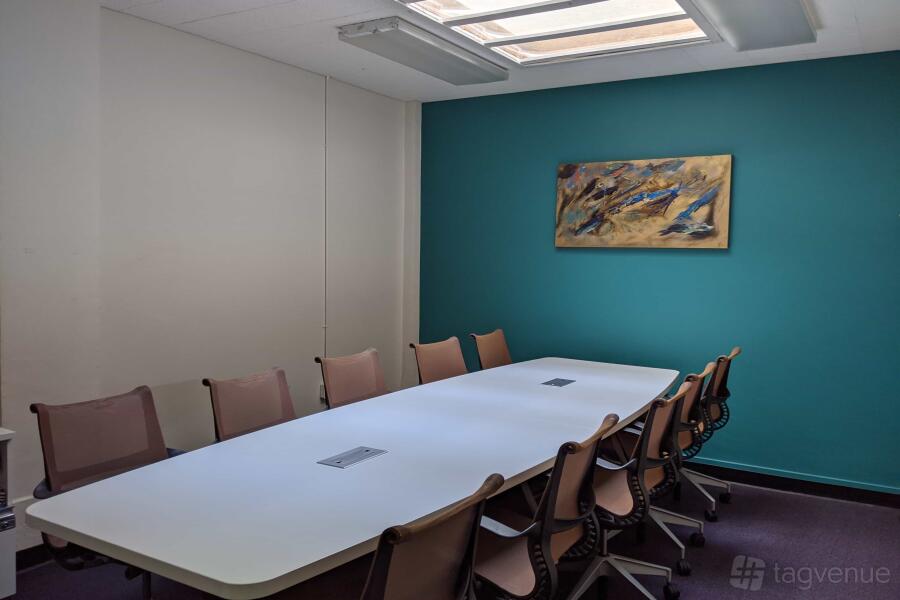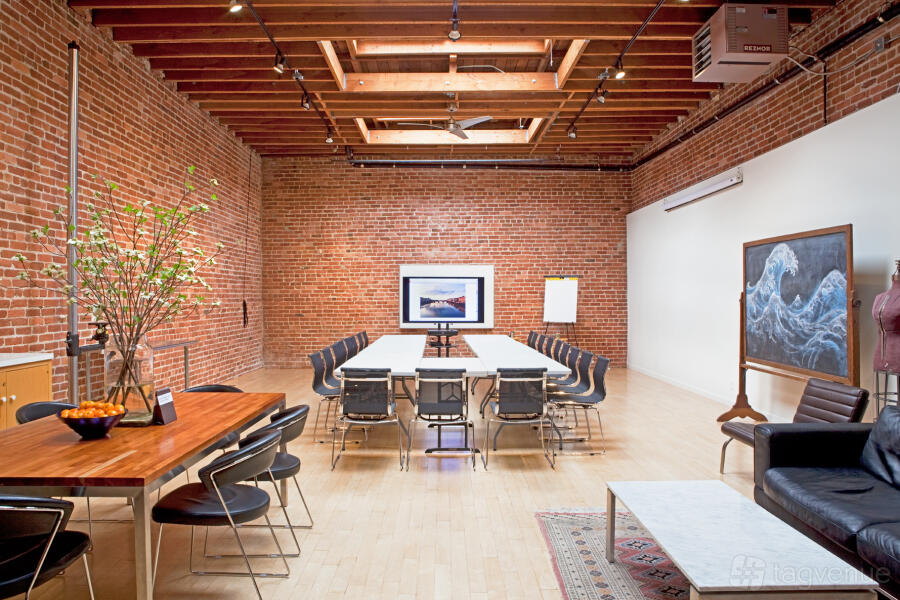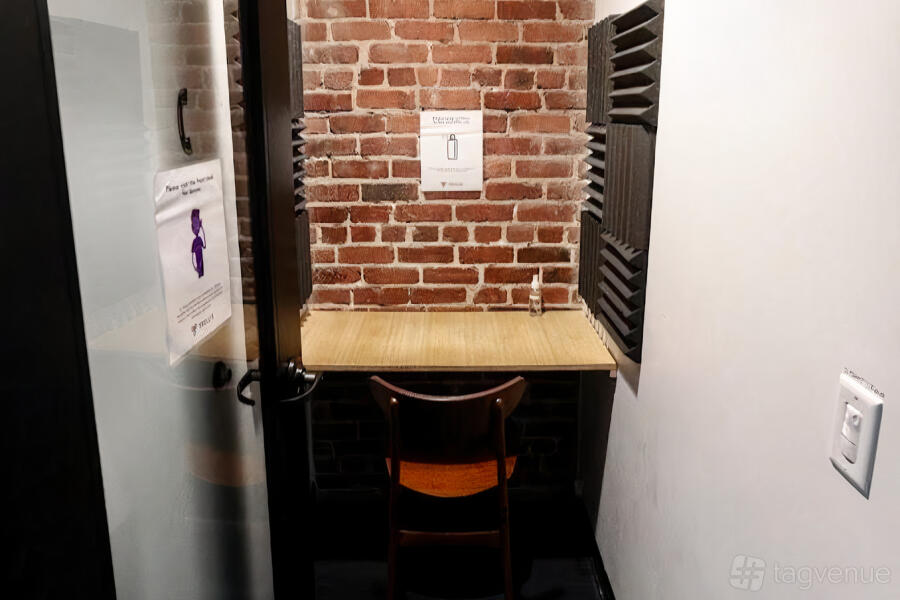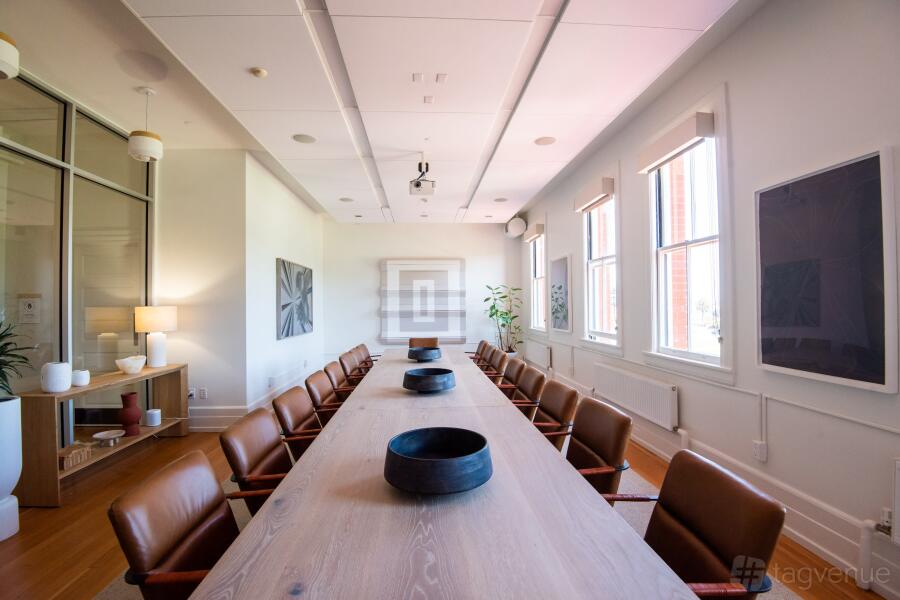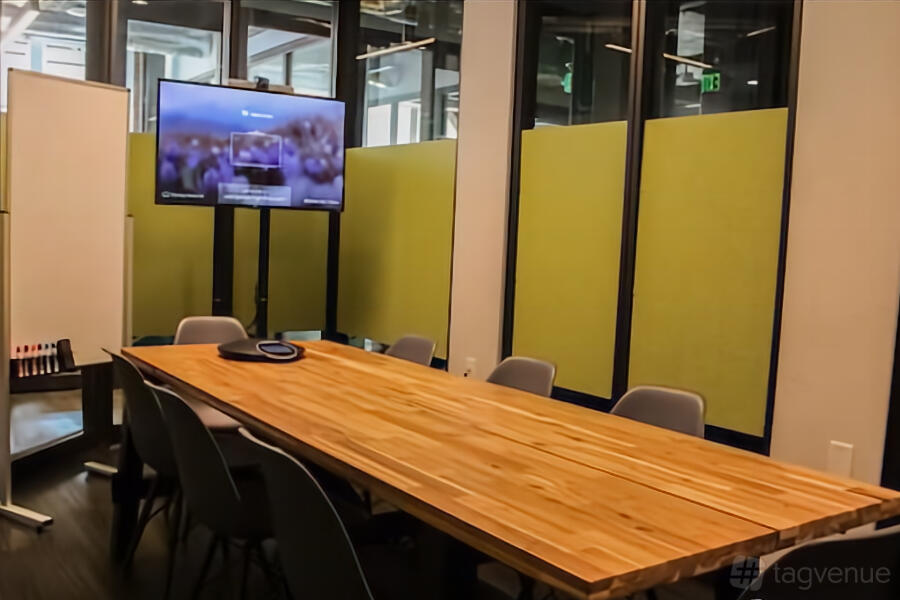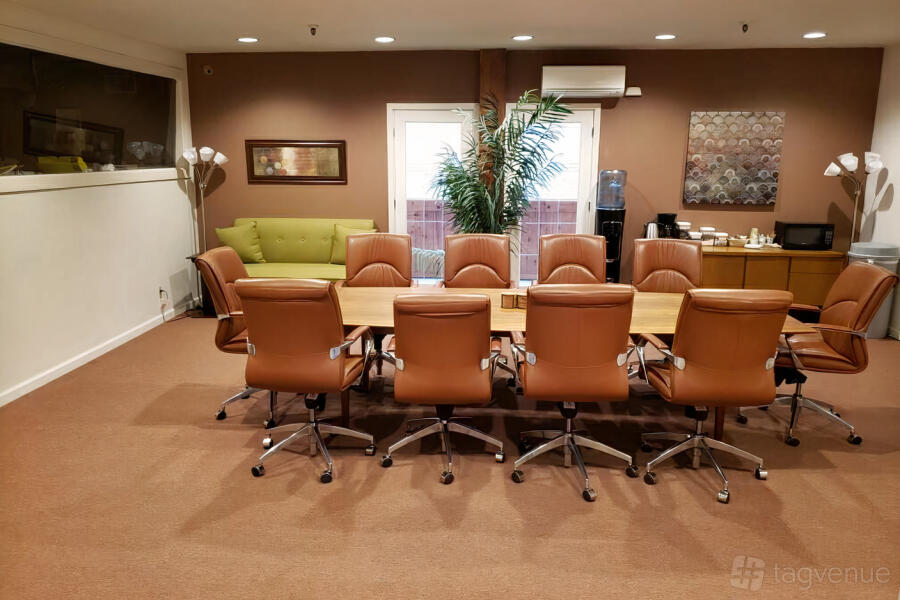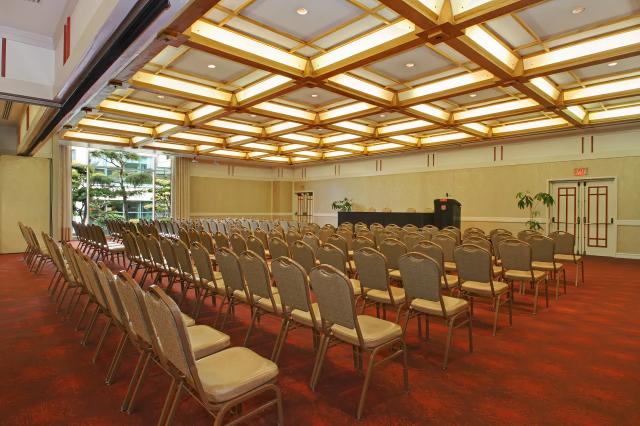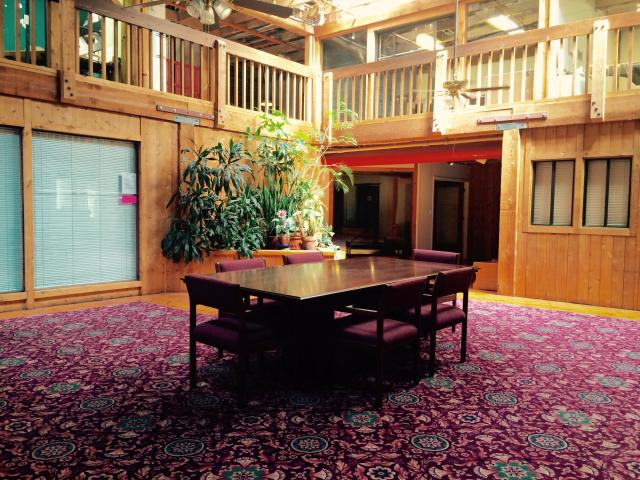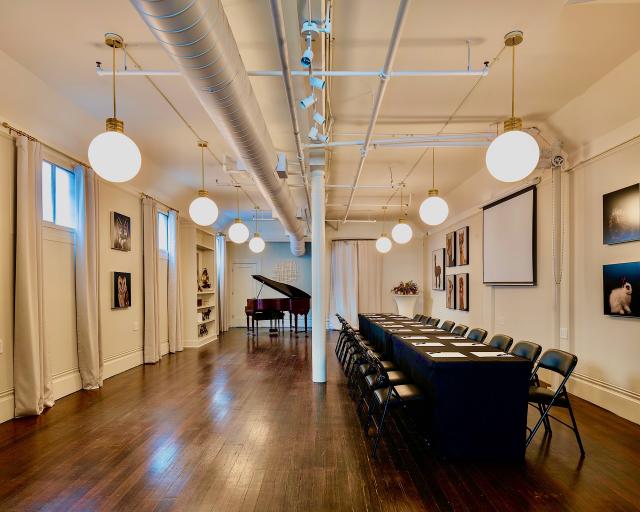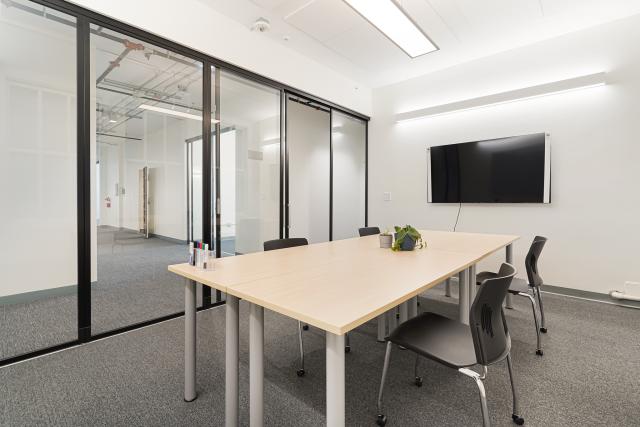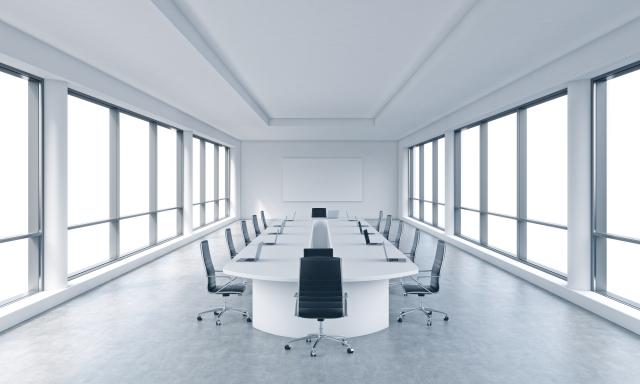Top Cheap Meeting Rooms in San Francisco, CA
Do you want to organize a meeting on a budget? Have no fear! We’ve shortlisted the best budget-friendly spaces from all across San Francisco, which means that your dream one is only a few clicks away. It doesn’t matter if you want to discuss urgent business about your start-up, organize a brainstorming session to nail a project, or resolve an important problem, here on Tagvenue you will find the perfect space options that will contribute to the meeting’s success. So hop on our platform and scroll through our listings of prime cheap meeting rooms in San Francisco and book your favorite one today!
-
Meeting Room
8 guestsDynamico SpaceUnion Square, San Francisco, CASSamantha
“Great meeting space with tons of availability, even on weekends.”from $50
hire fee / per hour -
Conference Room
10 guestsCo-Mission SpaceMission District, San Francisco, CA#Supervenue
PPhil K.
“It was easy to book. The location & venue met my expectations. Adam was very friendly and accommodating.”from $35
hire fee / per hour -
Renovated Warehouse
24 guestsSintak StudioMission District, San Francisco, CA#Supervenue
CColin S.
“Everything you need for a meeting in clean and well equipped space. Hosts were very responsive and helpful.”from $150
hire fee / per hour -
Mezzanine Booth
1 guestsTrellisSouth of Market (SOMA), San Francisco, CABBrian L.
“The team was fantastic! Highly recommend using this space :)”from $10
hire fee / per hour -
Boardroom
18 guestsEdge & Node House of Web3Presidio, San Francisco, CAPresidio Boardroom is ideal for professional gatherings such as meetings, workshops, and client presentations. The minimalist decor in neutral tones, promotes focus and clarity during sessions.from $220
hire fee / per hour -
Private Office
4 guestsCo-Mission SpaceMission District, San Francisco, CA#Supervenue
MMike X.
“Great service, fantastic price, nice people and a free working environment.”from $50
hire fee / per day -
12 Person Meeting Room (5C)
12 guestsWerqwise San FranciscoSouth of Market (SOMA), San Francisco, CA#Supervenue
Are you looking for a smart space to host your next meeting? Meetings can be hectic, confusing, and time-consuming. A private office to accommodate your team.from $120
hire fee / per hour -
Suite 322
12 guests350 TownsendSouth of Market (SOMA), San Francisco, CA#Supervenue
You will love the vibe here at 350 Townsend! This space is great for a board meetings, team building, large enough with 650 sq ft, coffee & tea, 2 whiteboards, monitor, printer, 10 chairs around table with extras chairs infrom $95
hire fee / per hour -
ROOM 207
50 guestsAMA's SF Executive Conference CenterSouth of Market (SOMA), San Francisco, CAMeeting Room 207, a versatile and open space designed to accommodate a wide range of professional activities. This spacious room features various seating arrangements, making it perfect for presentations, workshops, training,from $120
hire fee / per hour -
White Swan Conference Room
25 guestsWhite Swan InnDowntown San Francisco, CAOur Conference Room is the ideal space for any kind of business related gathering, whether just a meeting or very important presentation! With capacity up to 25 guests, WiFi, projector, flatscreen TV, whiteboard and flipchart,from $150
hire fee / per hour -
Conference Room
12 guestsIntelligent Office Financial DistrictFinancial District, San Francisco, CAThe conference room fits up to 12 people comfortably. Fully equipped with a large whiteboard and TV. Free wired and Wi-Fi Internet. Free self-serviced coffee/tea/water in the kitchen.from $70
hire fee / per hour -
The Alternative + Anomalous
100 guestsAlloy CollectiveSouth of Market (SOMA), San Francisco, CAThis space is perfect for those looking for a place to host their corporate events and workshops or just want a clean and modern space to use in San Francisco.from $949
hire fee / per hour
- 1
- 2
- 3
- ...
- 5
Capacity
Budget
Area type
Venue type
Catering and drinks
Accessibility features

FAQs about Top Cheap Meeting Rooms in San Francisco, CA
According to data from Tagvenue, prices for a cheap meeting room rental vary between $40 to $100 per hour. But don’t hesitate to ask the venue managers for any special deals and discounts. Also, to lower your costs you can try to search for recently launched meeting rooms in your neighborhood, as usually, they have special offers and promotions.
The areas around Union Square hide some fantastic and cheap hidden gems, especially streets near the Embarcadero and Montgomery St subway stations. These spaces offer a lot of variety in size and interiors, we are confident that you can find the perfect one to suit your requirements.
To have the best and cheapest options available, start your search immediately after settling your budget, optimal dates, and a number of participants. This will give you a chance to compare prices and what the meeting rooms have on offer. But generally, it’s best to rent a meeting room no later than 2 weeks before the meeting.
Generally, meeting rooms offer some basic equipment such as chairs, tables, projectors, whiteboards, access to the power supply, and WiFi. However, each meeting space is different, so before signing the contract make sure to check whether the space has the equipment essential for conducting your meeting. Also, don’t hesitate to ask venue managers for further information regarding the equipment.
Your Guide to Renting Cheap Meeting Rooms in San Francisco, CA
Booking the right space is one of the most important elements to get right when planning your meeting. Things like interior, furniture, illumination, size, etc., all matter and can actually have a huge impact on participants’ mood and their engagement. So to increase everyone’s enjoyment and turn your meeting into a success, make sure to research what your first-choice studio offers. If you’re struggling with what to pay attention to while hunting for your dream (and cheap) meeting space, make sure to check out our list.
Key things to focus on when searching for the perfect meeting room
1. The color scheme
Take a look at the colors that dominate your first-choice meeting room. Are they dark or light? Dark colors tend to depress our mood and cause drowsiness. So if you expect every attendant to be actively involved in the meeting, make sure the space has a neutral color scheme. White or beige makes the surroundings bright and airy and will add some energy to the atmosphere.
2. Proper illumination
Check whether the space is properly lit. Dim light, just like dark colors, may cause fatigue, as well as eye strain which can contribute to loss of focus among the participants. It’s also worth checking if the space has any access to natural light. Large windows with access to lots of sunlight will help everyone feel better overall.
3. Room size
Make sure the space will accommodate everyone comfortably. Check that it isn’t cluttered with unnecessary items you won’t use during the meeting, and which may distract from active participation. Generally, in order to find the perfect room, we recommend roughly estimating how many people will attend, as it will give you the general idea how big of a space you will need.
4. Privacy
Will the room give you some much-needed privacy to successfully conduct the meeting? Each meeting should take place in quiet surroundings, so make sure to check if the walls are soundproof, or if at least the room is located in the area free from any distractions that may cause any unnecessary ruckus.
5. Room fit-out
Make sure the layout of the room will support the purpose of the meeting. Will a long table, or a few smaller ones work best? Maybe you would prefer laidback surroundings with sofas and armchairs for everyone to feel as relaxed as possible? Whatever the case, it’s also important to check whether the seating arrangement is comfortable. Chairs are one of the most important elements of the meeting room, so make sure they’re ergonomic and at least offer back support.
How to organize a meeting without ruining your budget
Once you roughly know what to focus on when searching for a meeting space, now it’s time to start planning! We strongly recommend that everyone draw up concrete plans when organizing any type of event. In this particular case, an action plan will help you organize a great meeting that is productive, yet enjoyable at the same time. Also, it may save you money, smoothly guide you through the whole process and make you feel less stressed out that something may go wrong. If you have never made an action plan before, why not see for yourself the great benefits of an action plan by making one. And don’t forget to check out our tips for organizing a meeting on a budget!
Set your budget - Determine how much money you can afford to spend on organizing the meeting. We recommend drawing up a rough budget, either on a simple sheet of paper or in a spreadsheet. This will help you keep track of all your costs, and increase your chances of not overspending.
Don’t settle for only one date - Be flexible. Pick a few dates and thoroughly check the offers available on those specific days. That will give you a little insight on whether you have picked the best budget-friendly offer and that there isn’t any better one available on a different date.
Make a guest list - Calculate how many people will attend the meeting and look for meeting rooms that will accommodate all of them. Having a guest list can prevent you from booking a too-big space for a too-small crowd when you could have found a smaller one for less. Once you’re done with the guest list, try out our smart filters. They will help you search by the number of guests, so you can search among a curated list of meeting rooms that are perfect for the number of attendees that you expect.
Do you need equipment? - Always check whether the equipment you need is included in the price offer. It is extremely important when you’re on a budget, as it’s a good idea to avoid any situations where you are faced with unexpected extra fees for any equipment. When you’re not sure about what is included in the rental package and what may cost extra, always discuss this with the venue managers before finalizing your rental.
Go digital! - If your meeting requires any printouts, think of sending out digital copies to everyone before the meeting. You won’t have to bother about printing out any of the documents, your attendees will be prepared for the discussion and you’ll also save some time and money!

